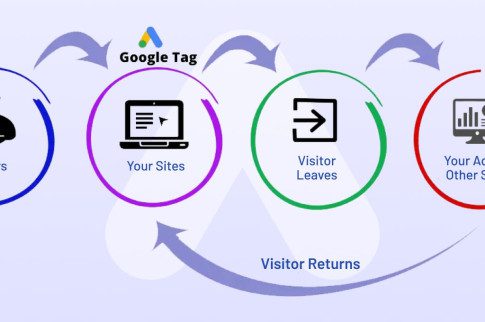How To Create A Successful E-Commerce Advertising Strategy

Table Of Contents
While it’s true competition in the e-commerce industry is getting fierce, what’s also in the range of opportunities. Online retailers see the growing sales of their competitors as a setback.
But, we see it as an opportunity to learn. Tap into the potential of e-commerce advertising strategy as you learn from other online retailers. Optimize these strategies for your own business.
With that said, below is our practical checklist on building a successful e-commerce advertising strategy. It’ll guide you to explore, test, and find out what works best for your online store.
Tips To Create A successful E-Commerce Advertising Strategy:
Personalize ads using Facebook and Instagram ads
Choosing the right platform for advertisement is vital for e-commerce brands. When you know where your target customer base spends most of their time, consider the first goal achieved.
Facebook and Instagram ads are cheaper and more effective alternatives to other advertising types.
These social media platforms with a huge base of online shoppers help you track behavior patterns, interests, and browsing habits. Following this, you can target your potential buyers.
Tailor your ads based on how each platform showcases the ads and how users respond to them.
For example, Facebook users are more likely to respond to in-feed ads. Thus, ensure they are attention-grabbing with a quick glance.
Similarly, Instagram users are likely to respond well to gif ads or video ads of 10-15 secs length.
To make your video ads more interesting and engaging you can use ad maker, which gives you access to tailor-made ad templates and create social media ads for all platforms with ease.
Leverage the potential of Google ads

Google ads are competitive; they show up at the top of search results when a user types a particular phrase. Use “buy” with your keywords so your ads show up for buyer intent.
If you are looking for brand awareness, Google display ads are great. They show up on your favorite websites as banner ads or sidebar ads. Although they have a low conversion rate, they are cheaper.
Besides, if your focus is to show up for shopping intent, go for Google shopping ads. They show up beside images in the Google shopping tab.
With key highlights such as high ratings, low prices, and high-quality images, Google shopping ads offer high conversion rates.
Use catchy CTA buttons
CTA buttons create an impact on the reader with different colors and shapes. To make your CTA noticeable in comparison to the rest of the text, using CTA buttons is wise.
Marketers consider it a critical part of a marketing campaign. In fact, it is the most important piece of copywriting.
From giving direction to encouraging the reader to take action, creating relevant CTA buttons needs consideration.
We would suggest you create a catchy, unique CTA. Unlike common ones like Try Now or Sign up, use Try free for 90 days or Unlock full report.
Not to mention, social media offers you several CTA options with Facebook and Instagram Ad Maker.
Use keyword research for listings
You want your e-commerce store to show among the top results when a user types a query. In-depth keyword research is central to boosting your store listing to the top.
Get the most out of your e-commerce advertising by choosing industry-specific yet unique keywords.
Let’s say, you sell recycled canvas shoes, using similar brand-specific keywords helps you rank for that query.
There is no dearth of keyword research tools online, both free and paid. Top of the game is Google search trends, keywords planner, SEO review tools, and surfer SEO.
Include an omnichannel approach
An omnichannel approach helps your target customer engage with you on their desired channel.
Being omnichannel refers to using or being present on several different channels at once, such as social media, websites, blogs, video hosting platforms, etc.
If your omnichannel advertising strategy checks all boxes, it’ll help your customers conveniently buy from you. Besides, it helps build trust with the customers.
For instance, if a user comes across your ad on Google search but they spend more time on Instagram, they’ll cross-check your brand for authenticity on Instagram.
For your omnichannel approach to work for e-commerce advertising, ensure that you optimize the next ad campaign for all channels.
Once the user interacts with an ad on one platform, coming across the next ad on other platforms reinforces the buying intent.
Maintain brand consistency
Whether or not you take an omnichannel approach to advertising, branding consistency is inevitable.
It means your brand name, logo, colors, message is consistent on all platforms. It helps users to identify your brand quickly every time they come across it.
Create a powerful content strategy

Content offers information to your customers about the ad. Both title and description need to be concise yet attractive. It should make the reader want to learn more.
Titles must convey valuable information first; similarly, descriptions should contain important points first to hook the reader. But craft your description based on layout and word limit.
A bullet point description is apt for all devices. Besides, it also enhances readability so readers can scan for what’s useful to them.
Optimize the content for mobile, given that most of your customers use smartphones. Nevertheless, a well-crafted title and description are great for the Google algorithm.
Don’t forget social proofing
Social proofing is a great way to stand out from your competitors. Consumers are smart; they compare several merchants before making a buying decision. That’s why your brand needs social proofing.
People prefer user testimonials rather than an enticing copy of your ad. In addition, good reviews from real customers strengthen the ad content.
When you show a carousel of customer stories on a website or display honest feedback along with ads, it helps build trust with new buyers.
They like to know about the experience of previous customers to make an informed decision.
In a nutshell, social proofing is a great eCommerce advertising strategy to show unbiased opinions of your products.
Final thoughts
These are some of the top e-commerce advertising strategies, but there are user-generated content strategies too.
From influencer marketing to referral bonuses, there is UGC-centric content that helps drive sales to your eCommerce business.
However, speaking of advertising strategy, our pick is Google shopping ads for direct shopping while Facebook/Instagram ads for brand awareness.
Whatever strategy you use to target your customers, always use high-quality images.
In addition, leveraging social proof is essential to all your marketing strategies from TOTF to BOTF.
Read Also:

























